These rolls are as fun to make as they are to eat—and they look beautiful on a plate. You can customize them a million ways (think shredded chicken, tofu, mango…).
Call them summer rolls, Vietnamese spring rolls or salad rolls – either way they’re light, they’re fresh, and they make a gorgeous appetizer. Or a lunch for you. Or a special occasion addition to dinner. Or a fun DIY meal with the kids. There’s so many ways to enjoy them.
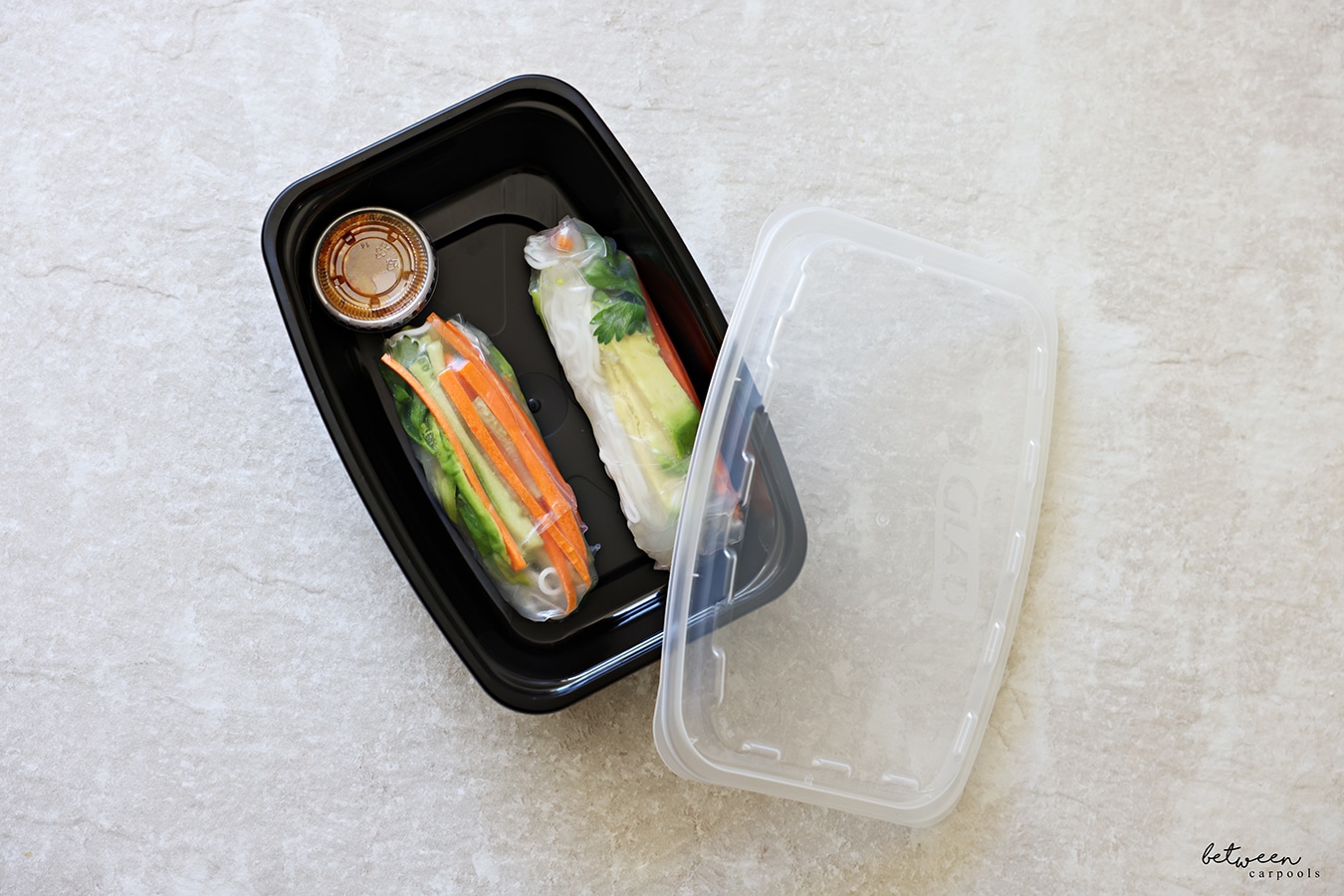
These Summer Rolls are based on Sina Mizrahi’s Crazy Good Summer Rolls from Best of Kosher. But even if you don’t want fish, you can still enjoy them. You can go ahead and prepare the original version with salmon, or try this variation.
First, prep all your veggies instead. This version uses rice noodles in the filling to help bulk them up and make them more filling, but you may want to use salmon. If using salmon, skip the rice noodles or the roll will get too overstuffed. You can also add a dairy element–cream cheese makes the whole thing creamy.

To roll the spring rolls, prepare two plates. Fill one large, shallow plate with warm water. Line one flat plate with a damp paper towel.

Dip one sheet of rice paper into the warm water for about 30 seconds, until soft but still a little firm.
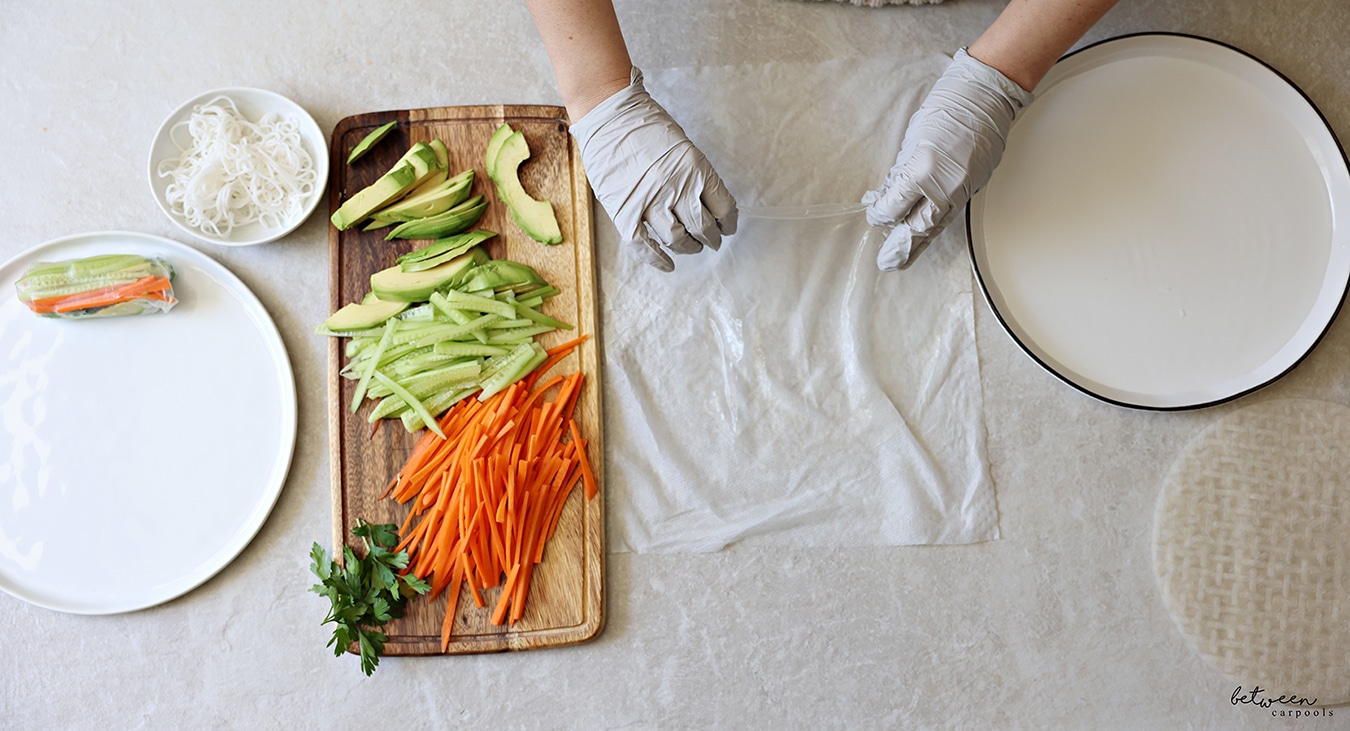
Transfer it to the damp paper towel.
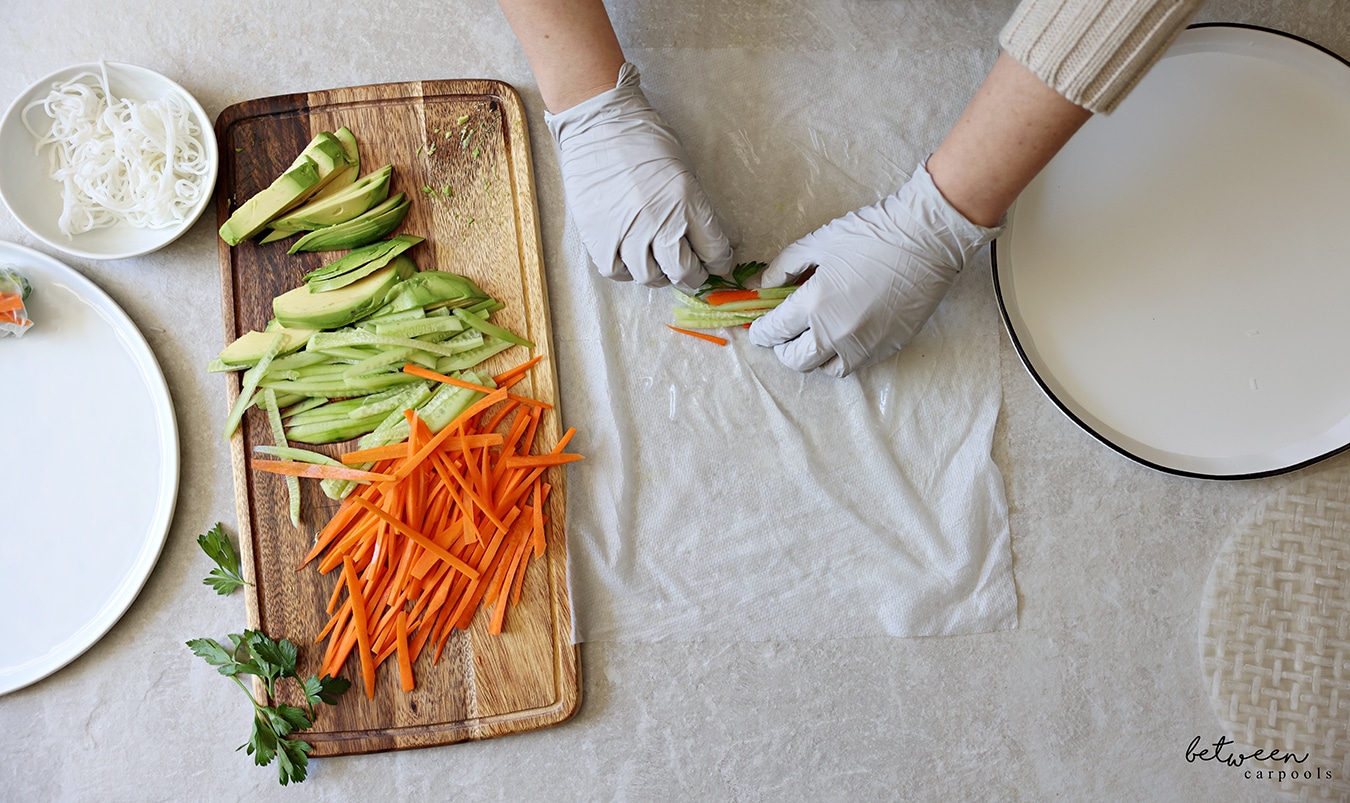
Add a little bit of each filling
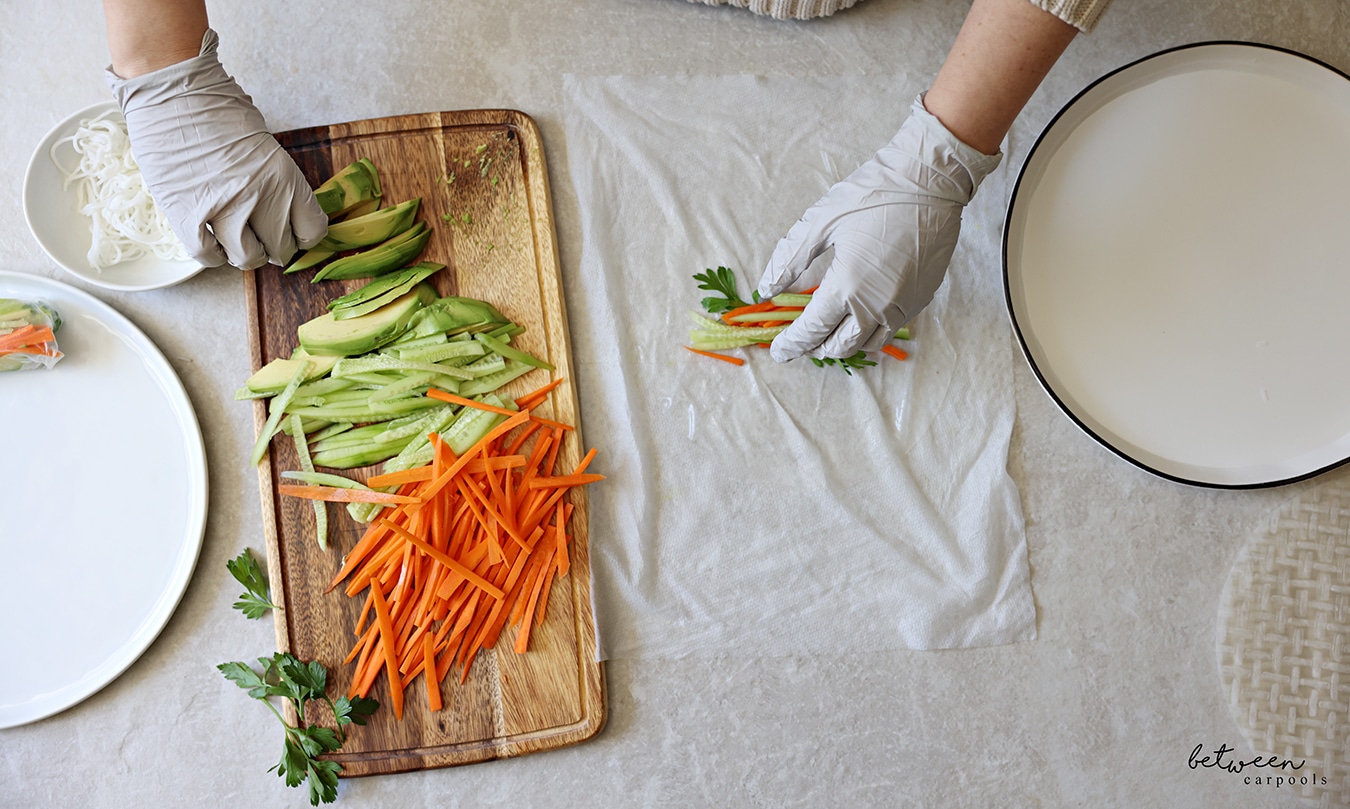
to the bottom third of the wrapper.
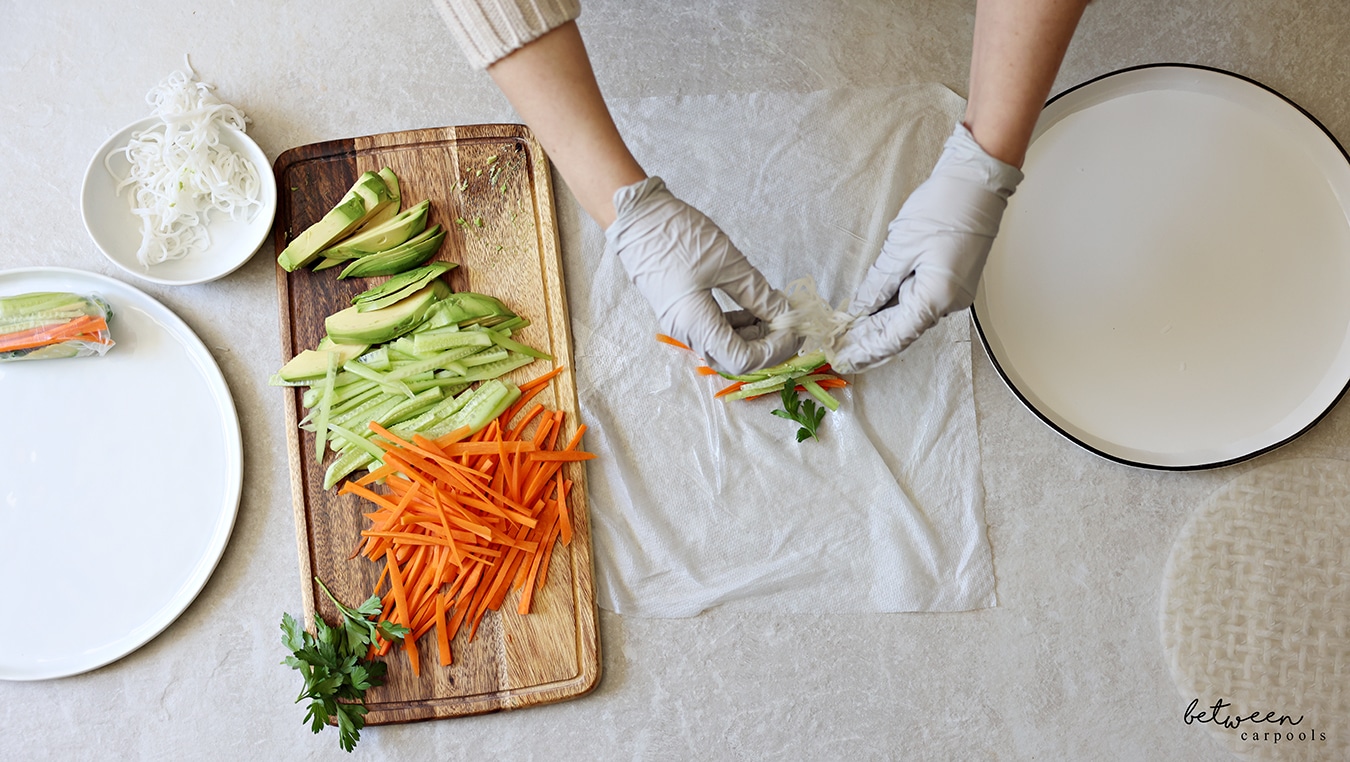
Don’t overfill!

Fold in the sides,

then fold the bottom over the filling,

and roll up tightly.
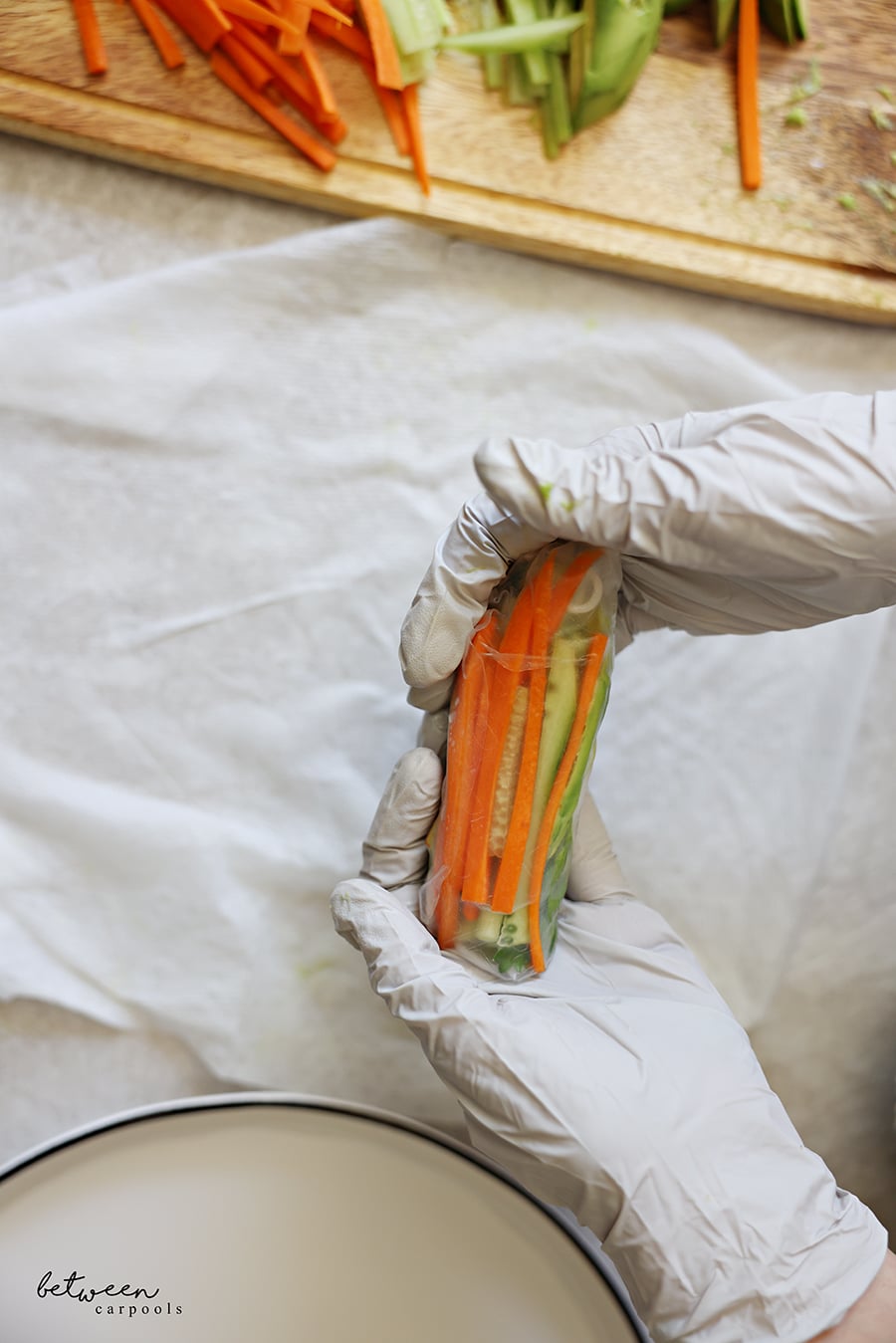
Place finished rolls on the second plate to rest. Work quickly! Don’t leave the wrapper in water too long, and don’t let it sit too long before rolling—it’ll get too sticky or too dry.
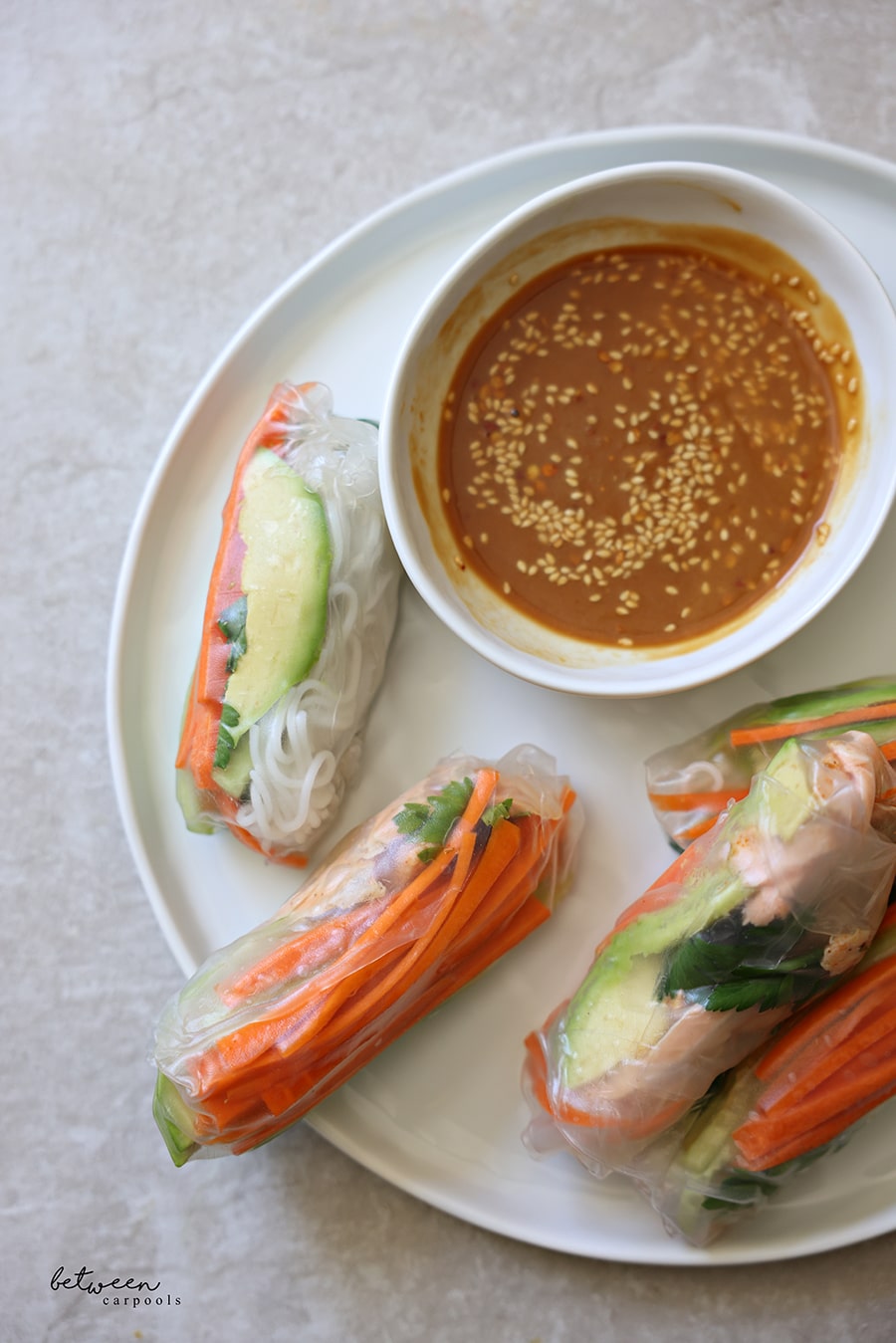
Sina’s Peanut Dipping Sauce makes the whole thing sing. Don’t skip it! I omitted the one ingredient I didn’t have on hand (hoisin sauce), and it’s still amazing.
Fresh Spring Rolls with Peanut Dipping Sauce
Ingredients
- 1 package rice paper wrappers
- 3 Persian cucumbers, julienned or cut into matchsticks
- 2 carrots, julienned
- 1 firm avocado, sliced
- handful of fresh parsley (or any herb you love—mint or cilantro work great too)
- ⅓ package rice noodles, cooked and rinsed with cold water OR Cooked salmon
Peanut Dipping Sauce:
- 3 tbsp low-sodium soy sauce
- 1 tbsp rice vinegar
- 1 tbsp mirin
- 1 tbsp toasted sesame oil
- 2 tsp maple syrup
- 2 tsp peanut butter
- 1 garlic clove, minced
- 1 1-inch piece of ginger, minced
- ½ tsp chili flakes
- ½ tsp toasted sesame seeds
Instructions
- Prep all filling ingredients.
- (If starting with raw salmon, season with salt, pepper, onion powder, and olive oil. Broil for 12 minutes.)
- To roll the spring rolls, prepare two plates. Fill one large, shallow plate with warm water. Line one flat plate with a damp paper towel.
- Dip one sheet of rice paper into the warm water for about 30 seconds, until soft but still a little firm. Transfer it to the damp paper towel.
- Add a little bit of each filling to the bottom third of the wrapper. Don’t overfill!
- Fold in the sides, then fold the bottom over the filling, and roll up tightly.
- Place finished rolls on the second plate to rest. Work quickly! Don’t leave the wrapper in water too long, and don’t let it sit too long before rolling—it’ll get too sticky or too dry.
- Prepare the sauce. Whisk together all ingredients. Serve alongside spring rolls.



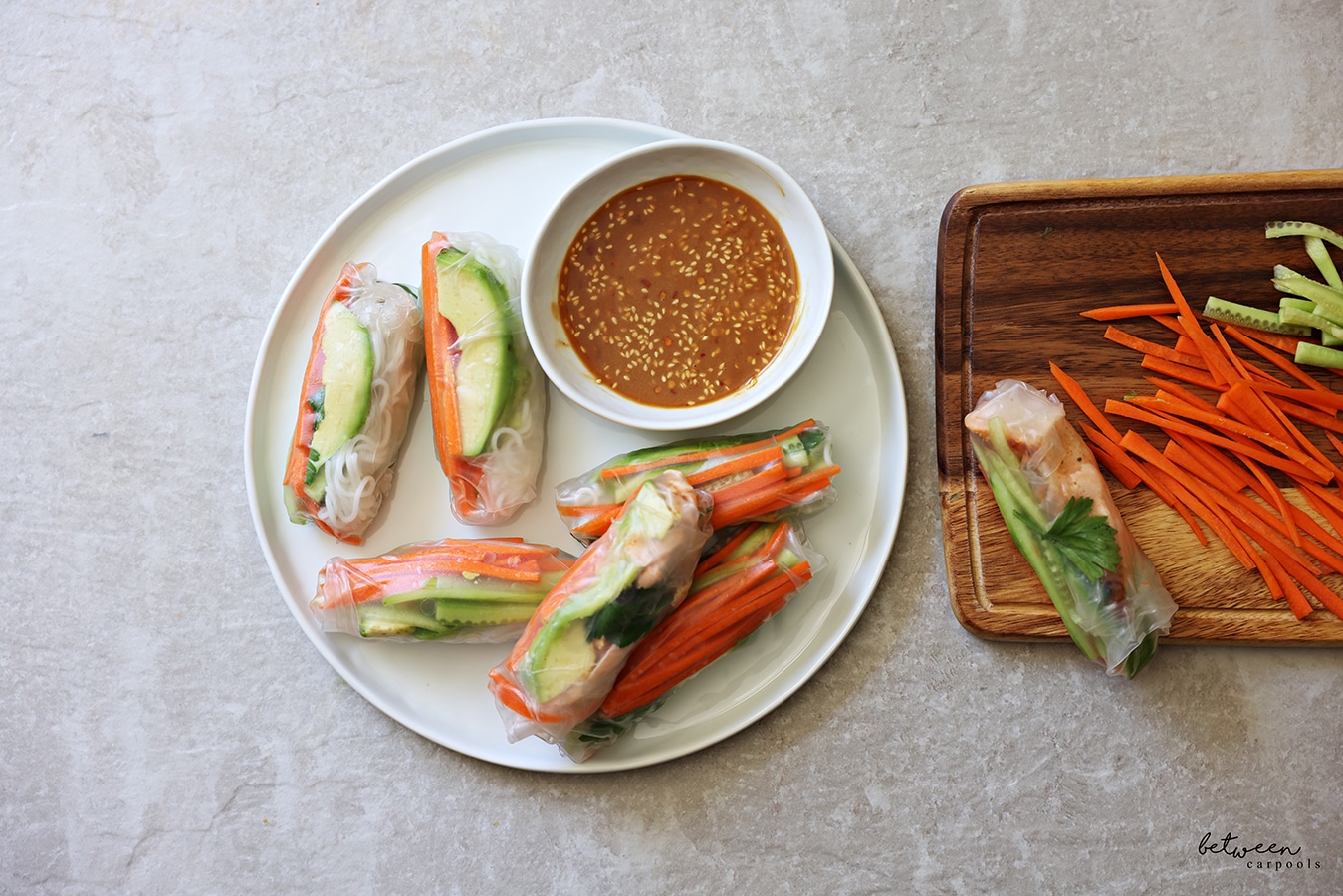
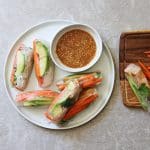

Is there an alternative dipping sauce you’d recommend for someone with peanut allergies? Thanks!
You can use any Asian dipping sauce you prefer. The peanut is just a commonly used element, but nothing is written in stone. Do you prefer a fruity duck sauce/plum sauce kind of condiment? Or, maybe a teriyaki sauce tantalizes your tastebuds! Whatever makes your palate water is the one you should use!
Would this stay good for the next day? Like can I make it Friday and serve it on shabbos?
Honestly, they’re best served when freshly made as the wrappers can become dry, sticky and rubbery over time. If you’re wanting them for Shabbat, I’d strongly recommend you make them as close to Shabbat as possible (for the best chance the texture will not be wrecked), and you’ll want to store them in a container lined with a damp paper towel in a single layer (do NOT freeze). Use another damp paper towel in a single layer over the top to prevent them from drying out. The towels should be damp, but not ‘wet’. Wring them out sufficiently to prevent them from being saturated. Cover them with cling wrap to hold in some of the moisture. However, I’d omit the e avocado, because it would brown overnight.